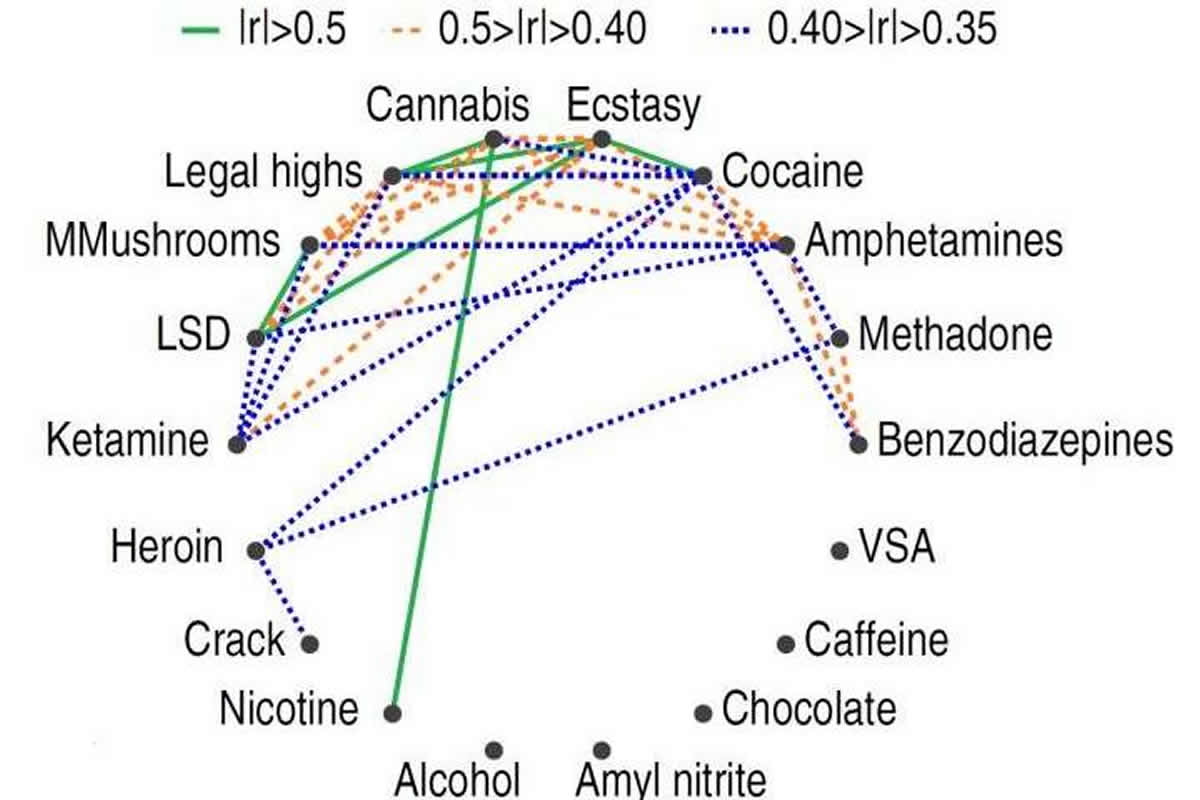Summary: Your personality type may influence addiction to certain drugs, a new study reveals. Those whose personalities rank higher for impulsivity are more likely to use ecstasy, while those who score higher for neurotic traits are more likely to use opioid like heroin, researchers report.
Source: University of Leicester
The social environment is an influential factor with regards to drug addiction. However, some people living in the same environment become drug users, whilst others resist. Is this difference just random or are there key personality traits that help people to avoid drug addiction? Is it possible to evaluate the risk of drug consumption for different personality profiles? Is this risk different for different drugs?
These questions are important for society including law enforcement, public welfare, education, healthcare professionals, and families. How can we evaluate the psychological component of risk? How can we construct social and psychological training to decrease that risk and prevent drug addiction?
An interdisciplinary group of researchers analysed data concerning the use of 18 different psychoactive substances and found answers to the above questions. A new and original database with information on 1,885 respondents was collected and analysed by a number of data mining methods. The results are reported in a book, published very recently by Springer. In brief, the main findings are:
- There is a significant difference in the psychological profiles of drug users and non-users. Hence, a psychological predisposition to drug addiction exists.
- The psychological predisposition to using different drugs may be different. For example, there is significant difference between ecstasy users and heroin users.
- Use of different drugs is correlated. The structure of correlations is presented in the figure below.

The details are more important and interesting than the general results: the devil is in the detail. Personality was represented by the modern Five Factor model: N—Neuroticism, E—Extraversion, O -Openness to experience, A—Agreeableness, C—Conscientiousness. This model was complemented by two more properties: Imp—Impulsivity, and SS—Sensation-seeking.
Generally, drug users are characterised by higher N, higher O, lower A, and lower C; but there are differences between different drugs. For example, heroin users have significantly higher N, lower E, lower O, lower A, and higher Imp than ecstasy users.
High O is typical for creative people and, at the same time, for drug users. Success in education (after primary school) and beyond is correlated with high C. People, who can create plans and follow them in real life (high C) are more ‘immune’ to drug addiction. This observation hints at the possibility of mitigating bespoke interventions.
Machine learning methods have allowed the authors to evaluate the risk of drug consumption and create maps of this risk.
The project team includes two professionals in forensic psychology and psychiatry: Ms E. Fehrman, an Advanced Practitioner at Rampton Hospital (Nottinghamshire Healthcare NHS Foundation Trust), which is one of three high secure hospitals in England and Wales, and Dr. V. Egan, an Associate Professor of Forensic Psychology practice in the Department of Psychiatry and Applied Psychology at the University of Nottingham. Four other authors, Professor A.N. Gorban, Professor J. Levesley, Dr. E.M. Mirkes, and Dr. A.K. Muhammad are affiliated with the Department of Mathematics, University of Leicester.
Professor Gorban said: “The project started in 2011, when all authors were at the University of Leicester. First, the psychologists created the plan of experimental work, collected data, and made the preliminary preprocessing of them. Then, the interdisciplinary workshop was organised and the mathematicians proposed the data mining technology for further analysis. Our guiding principle was, ‘Let your data think for you.’ After five years of collaborative work, the results are presented in the form of a book. This is a story told by data.”
Dr. Egan said: “The initial project was Elaine Fehrman’s MSc dissertation research, which I supervised when I directed the MSc Forensic Psychology at the University of Leicester. After achieving her MSc, Elaine wished to continue with the study, and we ended up with over 2,000 cases recruited from various online forums. The work is based on solid psychological theory regarding the influence of impulsivity, sensation-seeking, and the Five Factor Model of personality, as seen in different types of drug users. The work identifies two main populations of drug user: experimentalists (open, agreeable, sensation-seeking) who are interested in unusual mental sensations, and troubled drug users (withdrawn, emotionally vulnerable, unconscientious) who use substances that are depressant or otherwise obliterating. The two populations may need differing health intervention strategies to optimally encourage desistance.”
Source:
University of Leicester
Media Contacts:
E. Fehrman – University of Leicester
Image Source:
The image is credited to E. Fehrman et al.
Original Research: “Personality Traits and Drug Consumption: A Story Told by Data” by Elaine Fehrman, Vincent Egan, Alexander N. Gorban, Jeremy Levesley, Evgeny M. Mirkes, Awaz K. Muhammad is published by Springer.







